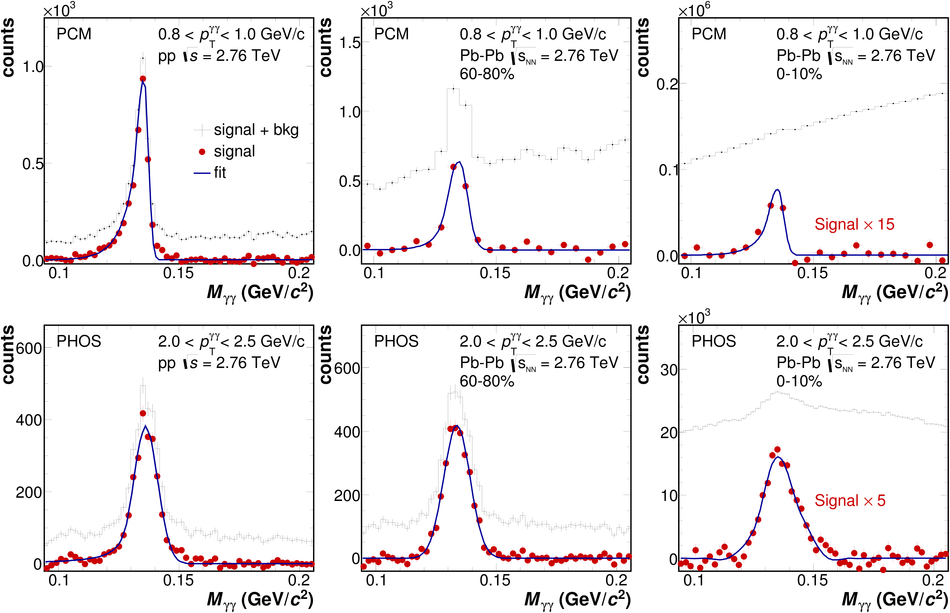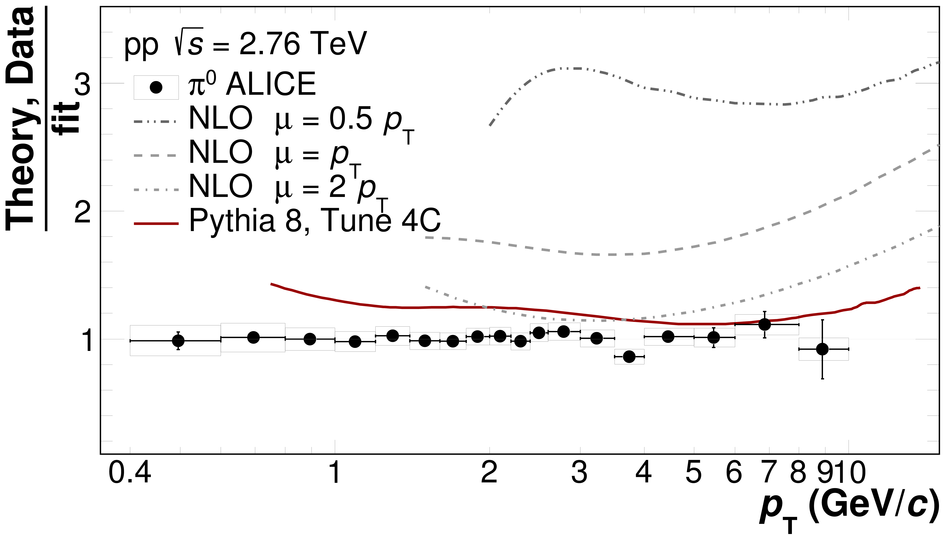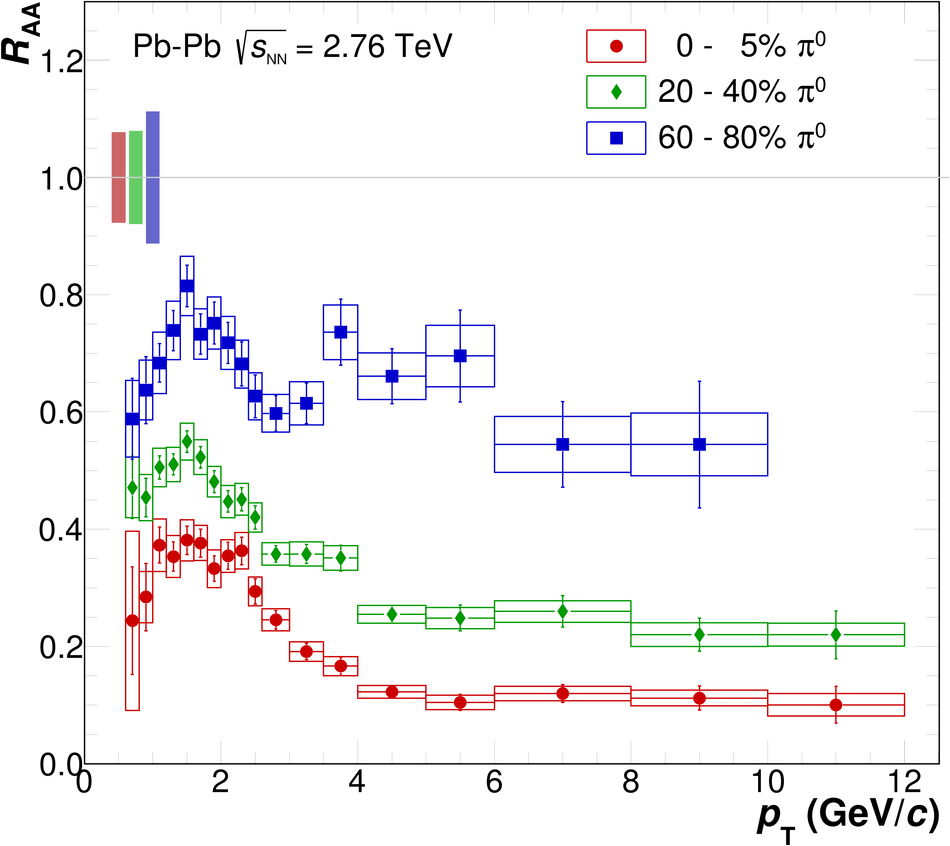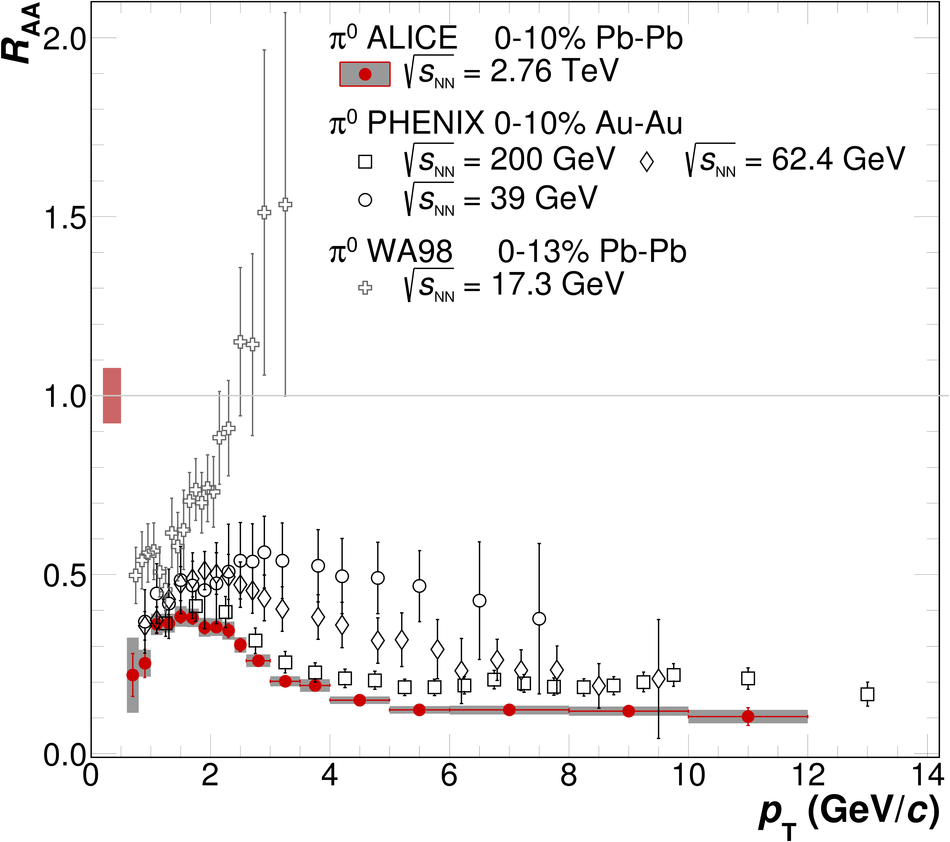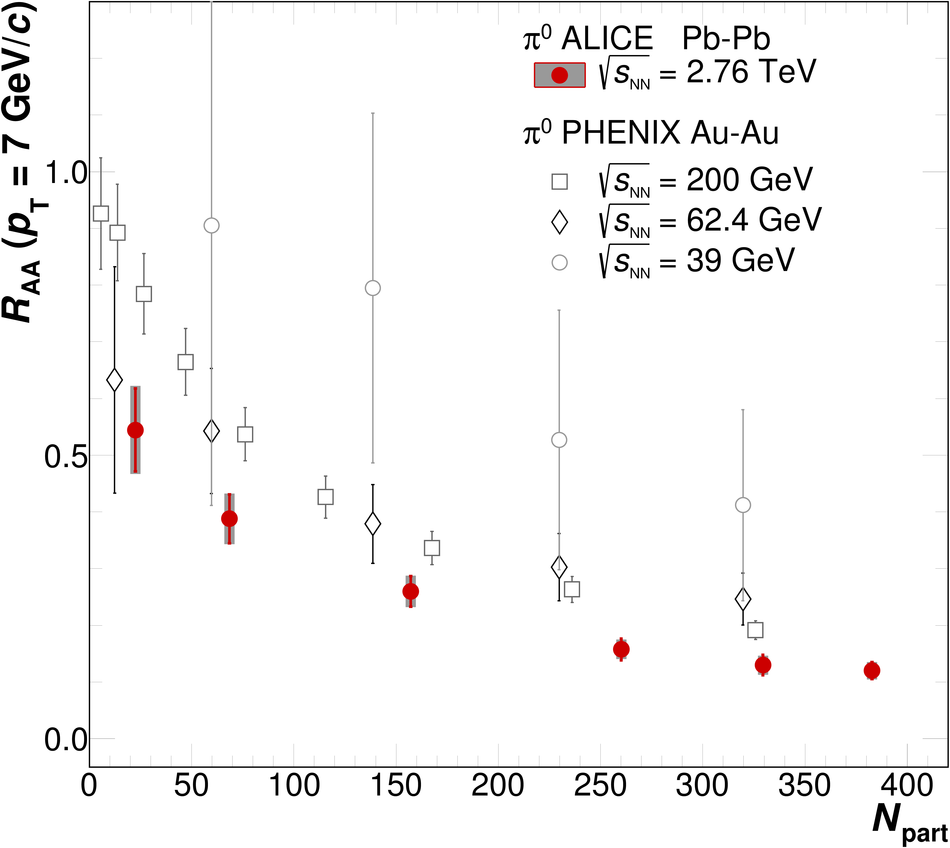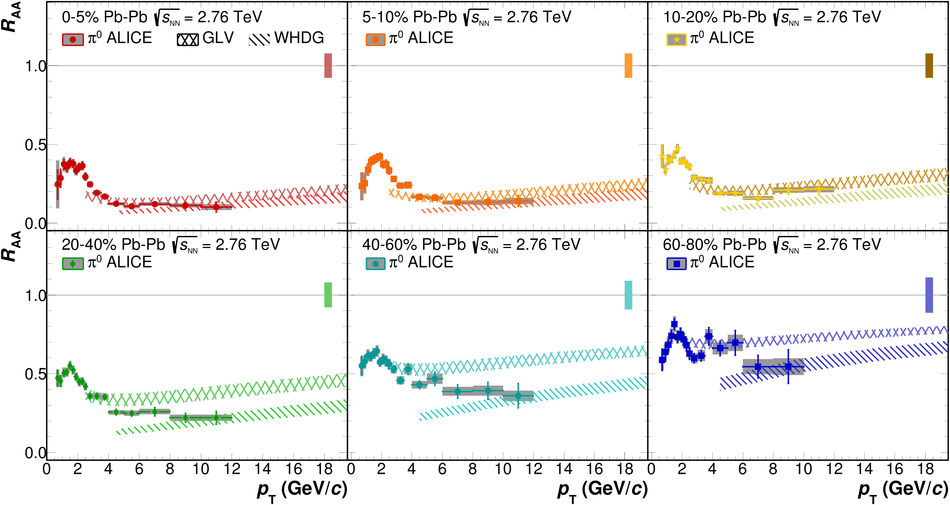Invariant yields of neutral pions at midrapidity in the transverse momentum range $0.6 <~ p_{T} <~ 12 GeV/c$ measured in Pb-Pb collisions at $\sqrt{s_{\rm NN}} = 2.76$ TeV are presented for six centrality classes. The pp reference spectrum was measured in the range $0.4 <~ p_{T} <~ 10 GeV/c$ at the same center-of-mass energy. The nuclear modification factor, $R_{\rm AA}$, shows a suppression of neutral pions in central Pb-Pb collisions by a factor of up to about $8-10$ for $5 \lesssim p_{T} \lesssim 7 GeV/c$. The presented measurements are compared with results at lower center-of-mass energies and with theoretical calculations.
Eur. Phys. J. C 74 (2014) 3108
HEP Data
e-Print: arXiv:1405.3794 | PDF | inSPIRE
CERN-PH-EP-2014-091

